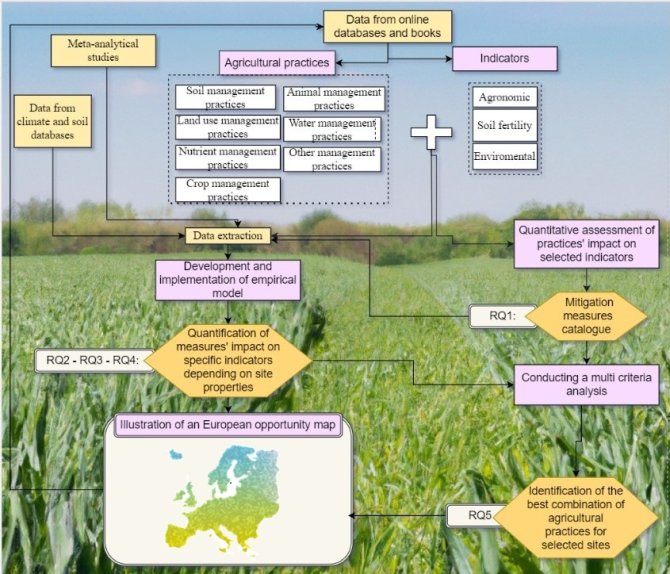
Project
Assessing optimal nutrient management practices in view of agronomic and environmental impacts
Agricultural intensification has not only enhanced food production but is also causing adverse impacts on the environment due to nutrient losses to air and water. To reconcile food production with environmental protection, there is a need to use more efficient management practices. In this study I will quantify the impact of multiple agricultural practices on multiple agronomic, soil fertility and environmental indicators taking into consideration the variation in site conditions. Impacts will be evaluated in terms of closing the gap between current and desired status in order to achieve sustainability. The overall product will be a “measure opportunity” map that can aid stakeholders with decision making.
Introduction
Agricultural management practices influence many agronomic, soil, and environmental indicators related to crop production, soil quality, and the quality of air and water. Current agricultural practices often lead to decreased nutrient use efficiencies with related increased nutrient losses to air and water with negative effects on the environment such as soil acidification, pollution of water bodies and eutrophication, and loss of biodiversity. A reduction in nutrient losses to air and water is thus essential to ensure sustainable and safe food production.
Objectives
A complete (semi-)quantitative overview of practices and impacts on multiple indicators that is focusing on co-benefits or trade-offs between indicators is lacking. Additionally, there is still a lack of information regarding the influence of multiple practices on multiple indicators while accounting for the spatial variation in site conditions and also considering the distance of the current nutrient status from the desired one.
I will assess semi-quantitatively the impact of multiple agricultural practices on multiple indicators (crop yield, nutrient use efficiency (N and P), soil organic carbon (SOC), available soil P content, pH, base saturation, ammonia, and greenhouse gas emissions). I will also assess quantitatively the impact of agricultural practices on a selection of those indicators accounting for the variation in site properties. Lastly, I will carry out an integrated spatial optimization of management practices, including the effects of multiple practices on multiple indicators.
Methods
A catalogue will be created with a focus on agricultural practices that are utilized in three different farming systems (conventional, organic and agroecological). This catalogue will help in having a first overview of the existing practices. Later, a meta-analysis will be conducted to assess the impact of the collected agricultural practices on crop yield, NUE, PUE, soil pH, base saturation, and greenhouse gas emissions from peat soils while accounting for site properties (texture, pH, climatic variables). Lastly, a multi-criteria analysis will be carried out for the available combinations of agricultural practices. The anticipated result will be an opportunity map presenting the optimal combination of agricultural practices among different European regions to bridge the gap between the actual and the desired nutrient state.

(Expected) results
- Impacts of agricultural practices on agronomic, soil fertility and environmental indicators as a function of site conditions
- Impacts of agricultural practices on nutrient use efficiencies and related crop yields in European agriculture
- Impacts of a management practices on soil pH and base saturation in European agricultural soils
- Impacts of management practices on greenhouse gas emissions from peat soils under agriculture in Europe
- Spatial optimization of management practices in view of their impacts on crop yield, soil fertility and environment